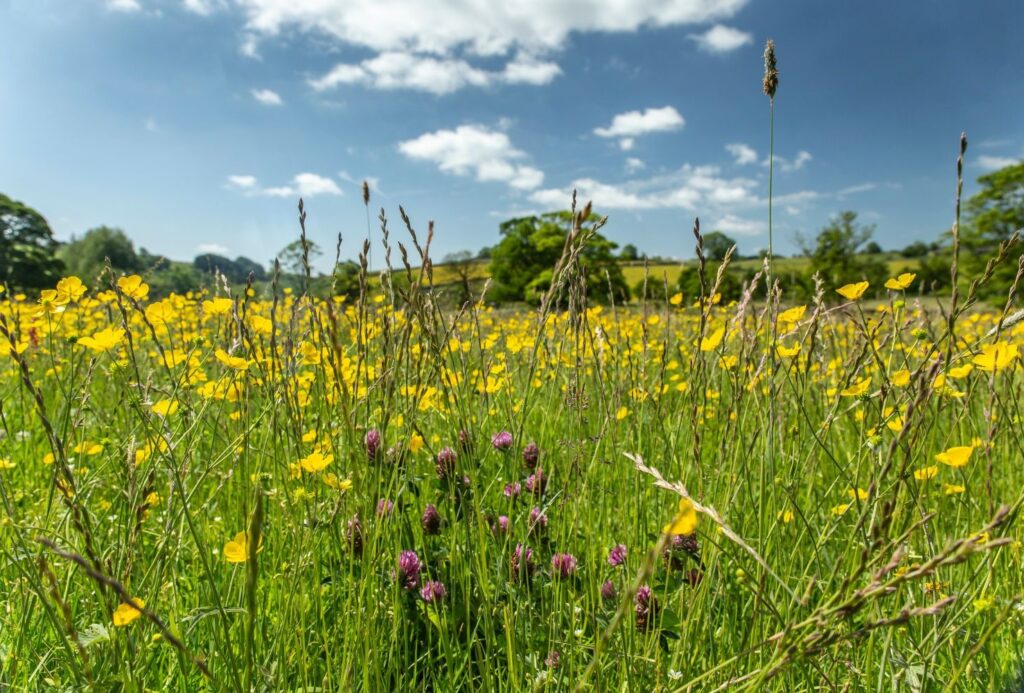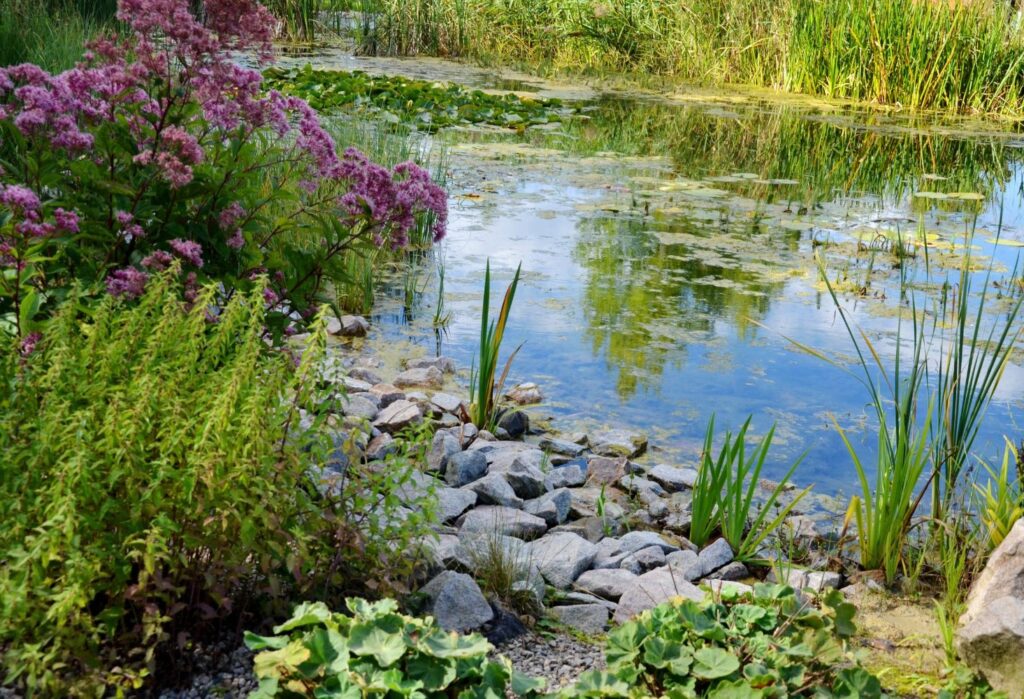Extreme weather conditions, severe dry spells in summer and heavy rainfall – climate change is also affecting gardens. For some time now, gardeners have been trying to make their green spaces (more) climate-friendly and are looking for alternatives to meticulously tended ornamental lawns and over-thirsty plants. The issue is not only a challenge for cities and municipalities, but it is also important for people with private gardens to adapt their garden behavior to the increasing climate changes and create a better microclimate.
If you also have a private garden or are part of a community garden, you will find some practical ideas in this article on how you can garden in a climate-friendly and sustainable way in the future.
Wild meadow instead of green desert
Due to its poor climate footprint, the perfect lawn at home can easily be replaced by a species-rich wildflower meadow with native, site-adapted grasses and flowers. Compared to a species-poor and thirsty lawn, a wild herb lawn can survive dry periods without watering and is very easy to care for.

Planting trees, hedges and shrubs
Trees store lots of CO2, produce oxygen and provide excellent shade. In addition to their ability to cool the environment by evaporating water through their leaves, they aerate the soil through their roots and allow precipitation to seep into the ground and recharge the groundwater.
Not only trees, but also hedges and shrubs store CO2, provide shade and are perfect as property boundaries. Shrubs and hedges provide more soil moisture in the surrounding area, offer good wind protection and additional food and hiding places for birds and insects.
Select climate-friendly plants
Planting hardy, drought-tolerant and site-adapted plants plays an important role in climate protection. These plants are robust and perfectly adapted to wind and soil conditions. By selecting climate-friendly plants, you can promote biodiversity in your garden in the long term.
Plants such as mullein, purple coneflower, maiden pink and cushion bellflower, stonecrop or stonecrop are thermophilic and tolerate drought very well. Trees such as gingko, shearing tree or sweet chestnut, which originate from the Mediterranean region, cope much better with drought than native oak, beech or birch. The field maple and service tree are also so-called climate trees that can adapt well to the effects of climate change.

Crop rotation, mixed crops and plant diversity
In order to create a sustainable and climate-friendly garden, the cultivation of plants – such as vegetables, herbs and flowers – should be as diverse and varied as possible. The greater the variety, the less likely it is that all plants will die at the same time. This is because monocultures usually leach out the soil, whereas mixed cultures complement each other and create a natural balance in the garden. For high soil fertility over the years, it is advisable to adhere to crop rotation – i.e. a regular sequence of planting that protects the soil.
Save water
Climate-fit plants that tolerate dry periods well usually root deeper and therefore require less water. Regular mulching also prevents the soil from drying out too quickly. Ideally, you can collect rainwater in a water butt so that you have enough water for watering even during dry periods. You can save a lot of water by watering correctly. Ideally, you should water your plants in the morning and close to the ground. Drip irrigation is also an easy and efficient option.
Your own compost heap and proper fertilization
As already described in our article on sustainable fertilizers, it is advisable to avoid artificial fertilizers as far as possible. By creating a compost heap, you can produce your own compost and always have a high-quality fertilizer available to use for your garden beds.
Green roofs and facades
There are now a wide range of design options for vertical outdoor greenery and green roofs. Green spaces on roofs or façades have been proven to have a positive impact on the quality of life. An enormous amount of rainwater can be stored on roofs in particular – the water virtually seeps away into the green roofs.
Create ponds and hills
Ponds provide a habitat for water-bound animals and plants in the garden, they store carbon and cool the environment through evaporation from the water surface from the plants.
Small mounds in the garden, ideally planted, slow down the wind and offer protection from drying out. Rainwater can be drained through mounds into soakaway beds. Mounds, ponds and other wild corners in the garden provide a variety of habitats for different animals and plants.

